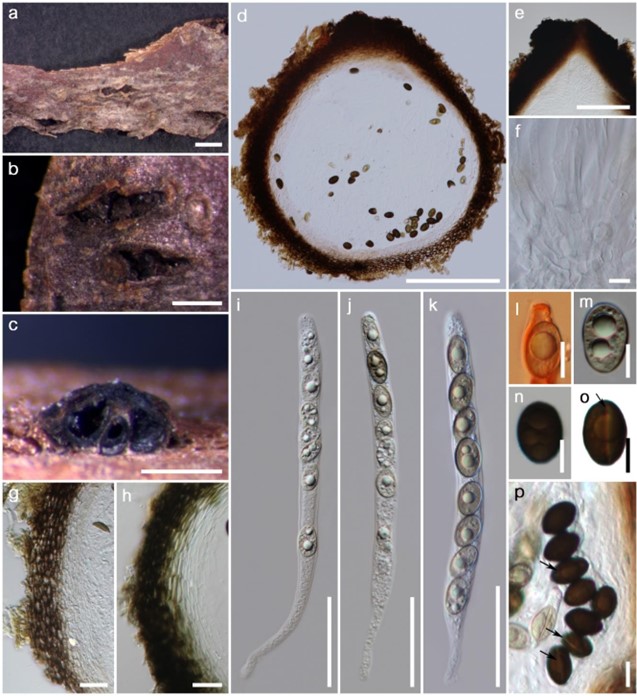Coniochaeta (Sacc.) Cooke, Grevillea 16 (no. 77): 16 (1887)
Index Fungorum number: IF 1209; MycoBank number: MB 1209; Facesoffungi number: FoF 01333; 98 morphological species (Species Fungorum 2020), 55 species with sequence data.
Type species – Coniochaeta ligniaria (Grev.) Cooke
Notes – Phialidic asexual morphs proved to be an informative character to delimit Coniochaetaceae, while the type of ascomata, which can be cleistothecial or perithecial, and the ornamentation of the ascospore walls, proved to have little taxonomic value at the generic level (García et al. 2006). Based on these conclusions, García et al. (2006) segregated several species from Coniochaeta and moved Coniocessia and Coniolariella to Xylariales. Eleven new Coniochaeta species supported by morphology and phylogeny have been introduced (Jiang et al. 2017, Coronado-Ruiz et al. 2018, Nasr et al. 2018, Samarakoon et al. 2018, Wanasinghe et al. 2018, Crous et al. 2019a, Harrington et al. 2019, Phookamsak et al. 2019). In this entry, Coniochaeta taeniospora is illustrated (Fig. 77).

Figure 77 – Coniochaeta taeniospora (Material examined – ITALY, Province of Forlì-Cesena [FC], Camposonaldo – Santa Sofia, on dead land branch of Quercus sp. (Fagaceae), 13 March 2017, Erio Camporesi IT3275, MFLU 17-0832, HKAS 102311). a, b Stroma on the host. c Vertical section of ascoma. d Cross section of ascoma. e Ostiole in section. f Paraphyses. g, h Peridium (h in 5% KOH). i-k Asci. l Ascus apex in Congo Red. m-p Ascospores (black arrow heads show germ slits). Scale bars: a = 1 mm, b, c = 500 μm, d = 200 μm, e = 100 μm, i-k = 50 μm, g, h = 20 μm, l-p = 10 μm, f = 5 μm.
